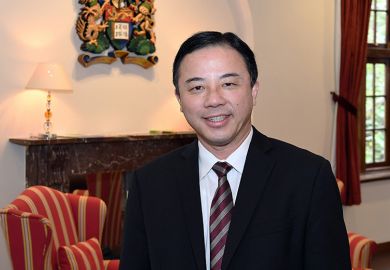At least 30 per cent of candidates on shortlists for UK university leadership roles drawn up by recruitment companies should be women, a study looking at gender balance in senior roles is set to recommend.
“Executive search firms”, used by some universities to compile lists of potential vice-chancellors, should also have to sign up to a code of practice to help raise the number of women they put forward for suitable senior positions, according to the report, details of which were revealed at an international conference last month.
According to the research, led by Oxford Brookes University and expected to be published on 21 May, women already in senior positions in UK universities are concerned that such firms have a “tokenistic” approach to shortlists, and sometimes include women simply to help with the statistics.
The researchers interviewed alumni of the Leadership Foundation for Higher Education’s Top Management Programme, which has an established track record in developing strategic leaders in UK academia, and found that women were two-and-a-half times more likely to be unsuccessful in applications for their next senior role than men.
“I know the mention of quotas and targets is always controversial,” said Janet Beer, vice-chancellor of Oxford Brookes, who presented some of the report’s findings at Going Global, a conference hosted by the British Council in Miami at the end of April.
“Affirmative action where organisations have goals for increasing the proportion of certain groups is something a number of countries have chosen to implement, and with some success.”
The report, Diversity in Higher Education Leadership: Researching the Careers of Top Management Programme Alumni, also spurs universities to set themselves “aspirational targets and put action plans in place to increase diversity in senior roles”.
“Governing bodies play the most vital role in the recruitment of vice-chancellors, and it’s been found that a very limited number are offered equality and diversity training,” Professor Beer added. “This could be key.”
The title of the session addressed by Professor Beer, “Dangerous demographics: women and leadership in higher education”, was taken from a chapter in a report about higher education in South Asia that was published by the British Council at the conference.
That study – by the Economist Intelligence Unit – finds that although there has been a significant rise in the number of female students enrolled in South Asian universities (those in Afghanistan, Bangladesh, India, Nepal, Pakistan and Sri Lanka), this has not been matched by an increase in women occupying senior leadership roles.
For example, in the region’s biggest higher education market, India, the proportion of women studying at university has doubled to 20 per cent, yet only 3 per cent of vice-chancellors are female, the report says.
“An explosion in the number of women students is not matched by growth in the number of women in senior leadership roles at universities,” it continues. “In all six countries considered for this report, the share of women in positions of authority and responsibility in higher education is shockingly low.”
Affirmative action, such as ensuring an equal gender balance on selection committees, is seen as key to breaking the glass ceiling, according to the report.
Register to continue
Why register?
- Registration is free and only takes a moment
- Once registered, you can read 3 articles a month
- Sign up for our newsletter
Subscribe
Or subscribe for unlimited access to:
- Unlimited access to news, views, insights & reviews
- Digital editions
- Digital access to THE’s university and college rankings analysis
Already registered or a current subscriber? Login





